This is my first visit to this site. My grandfather was a conductor on the Harlem and Put Divisions and they have always facinated me and are a basis for my model RR. So these wonderful pictures and the research effort are exciting and very much appreciated. We might note in passing for those not too familiar with the railroads within the city limits that the NYC also had a small roundhouse and turntable in Yonkers at the foot of the Put Division, where it met the Hudson Div. main.
Thank you! Your website is magnificent.
http://www.canadasouthern.com/caso/home.htm
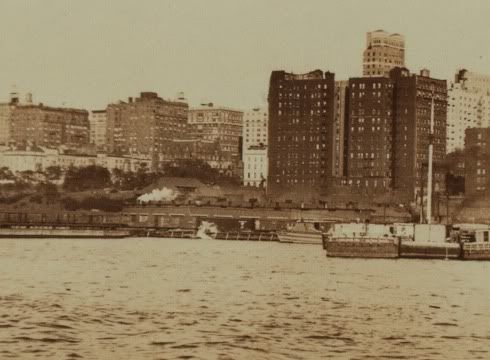
The roundhouse and the 12-story apartment building that is also in the first picture on page 1.
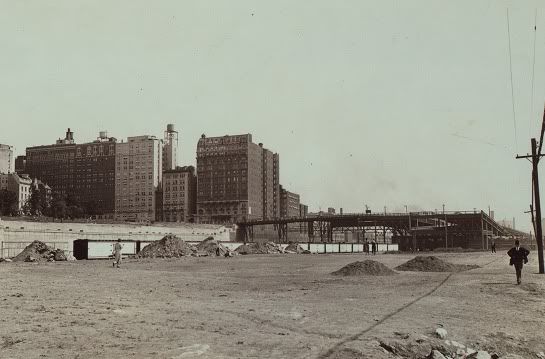
Same apartment building at 72nd St. and some refrigerator cars. An elevated highway has been built through the yard, which required demolition of the roundhouse. The river is to the right. Robert Moses, the city parks commisioner, will build the Henry Hudson Parkway over the tracks north of the yard.

Grain elevator built in 1877. Water tower on the roof.
http://i43.photobucket.com/albums/e390/MikeMacDonald/GrainElevator.jpg
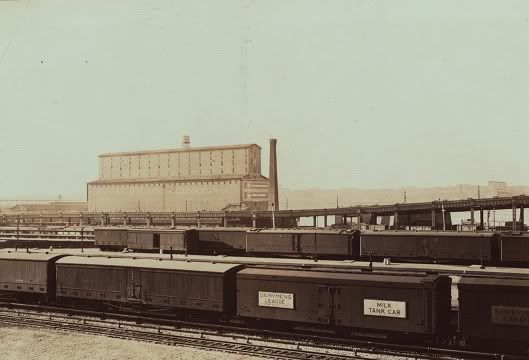
Elevated highway ascends north past the grain elevator.
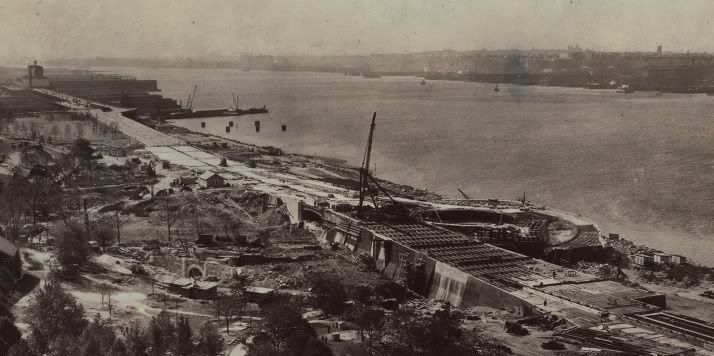
Grain elevator in the distance. Parkway construction at site of former 79th St. grade crossing.
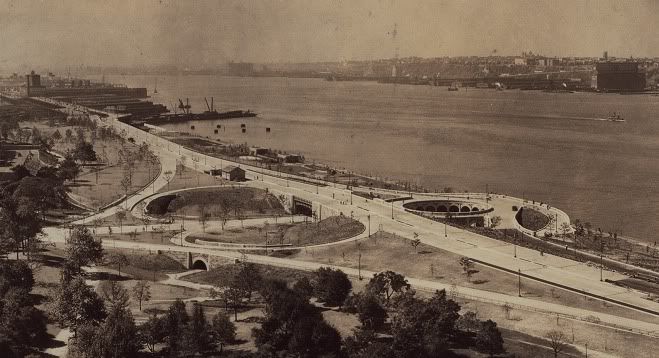
Hi Wanswheel–
Thanks for your research and wonderful photos. They provide many answers and more questions. The arial view of the roundhouse catches the eye with details such as it looks like the table and stalls may only be long enough for switchers, several of which are in immediate vicinity for comparison. But other photos clearly show road engines on the main tracks, not a surprise… hum… But the main question I have for you is the broadside photo showing portions of several milk trains. The Rutland Milk off their corkscrew div. came down the NYC Harlam Div from Chatam and past my grandparents home in Brewster, NY, scaring the crap out of the family when I frequently disappeared @ train time because they knew right where I and my dog were going. I was very young and they ended up tieing me to a tree at train time. That facination continues today with a NYC bound milk train on my HO layout.
Over the years I’ve caught glimpses in photos and assumed that the train went down the West Side intact. I’ve always wondered what happened then, how far down did the go and did they remain intact? Registering off the Grain Elevator and the Elevated Hiway, it looks like during the era of the photo they terminated on the east edge of the team yard just to the north of the large freight house. Do you have any more West Side milk train pics or references to some?
Thanks again for your generosity and these exciting pics-- Wayne (aka NY&N: New York and Northern).
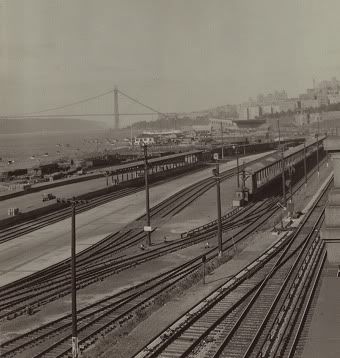
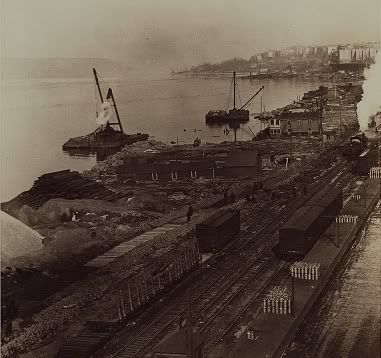
Milk trains stopped north of 60th St. because the Hudson River Railroad put stations in established neighborhoods, particularly Manhattanville (West Harlem), founded by the Dutch in 1639. Before milk tank cars, many milk trains went to the old 30th St. station, where Abraham Lincoln had arrived enroute to his inauguration.
http://i43.photobucket.com/albums/e390/MikeMacDonald/HRR4.jpg
With its demolition in 1931, a new facility for receiving milk was built at the 60th St. yard with 10 tracks and capacity for 87 cars. In 1934, the new St. Johns Park Freight Terminal opened and Borden’s milk went there. In 1937, as the old tracks on 11th Ave. were replaced by new tracks in a mid-block cut, Sheffield Farms built a huge milk processing plant on W. 57th St. with sidings in the basement.
Mike
I think one of the pictures shown is in correct. the pic showing tracks in a tunnel. Please note the under running 3rd rail. the West Side line was not electrified. And most of the trackage in the overbuild was only a 2 track line. The only exception was were the line came back out into daylite at 72nd st.
I’ll admit I may be wrong on some of this as my memory of the west side line is from the 60’s & later.
Rgds IGN
-
I visited and toured the milk facility with the tracks in the basement as a youngster with a grade-school class, but I remember it as a Bordens facility and not Sheffield. But I could be wrong because the family had Bordens and not Sheffield milk delivered to our home on W. 85th Street.
-
At one time the West Side Line was electrified as far south as the 60th Street yard. I am certain on this fact/ With the usual underruning NYC third rail. But not farther south.
-
The foot of the Putnam Line was not in Yonkers, but in The Bronx, where the Metro North Hudson line turns from north to west, following the east bank of the Harlem River, heading to the junction with the Hudson Line at Spuyten Dyvel. I think some track north of the junction may still be in place, for whatever purpose. Another junction farther north was in the middle of Van Courtland Park, which the Putnam line neatly split in half. Appropriately, it was called Van Courtland Junction, and the Gettys Square Branch ran west to an embankment, semi-elevated terminal at the southwest corner of Gettys Square, Yonkers, until abandoned about 1937 or 1928. Part of the Putnam had actually been electrified, from Gettys Square south to the Sedgewick Avenue - Manhattan Elelvated Bronx temrinal. And this was all double track, too! Two and three-car mu trains, about hourly weekday service. NYC competeing with its own Hudson Div. Before the emu’s there were Forny Tank locomotives, like those once used on the Manhattan and Brooklyn and Chicago elevateds.
Mr Klepper, Question for you was any of the trackage in the overbuild(north of 72nd st to 125th st) 4 track?
thx IGN
There may have been a short stretch of four tracks just north of 72nd Street as a throat to the yard, but from there north I remember it as nothing but two tracks. There may have been some sidings and some customers in the 125th Street area at one time.
Correction, I think at one time there was a small yard, or perhaps just four tracks, for some distance south of the Spuyten Dyvel bridge.
Also, I do not remember any roundhouse or turntable at the point where the Putnam left the Harlem. There may have been such at one time. The yard for the Putnam, with turntable and roundhouse, was near the current location of the High Bridge Station, which was a station for both Harlem and Putnam trains, the usual change point for Putnam ridiers wishing to go to Grand Central Terminal. The coach yard there was electrified for use by the Gettys Square mu cars. Other Putnam coaches were stored midday there, and so was the equipment on the west side local train. All this area and the right of way of the Putnam next to the Harlem all the way down to the 155th Street McCombs Dam bridge was usurped by the construction of the Major Deegan Expressway.
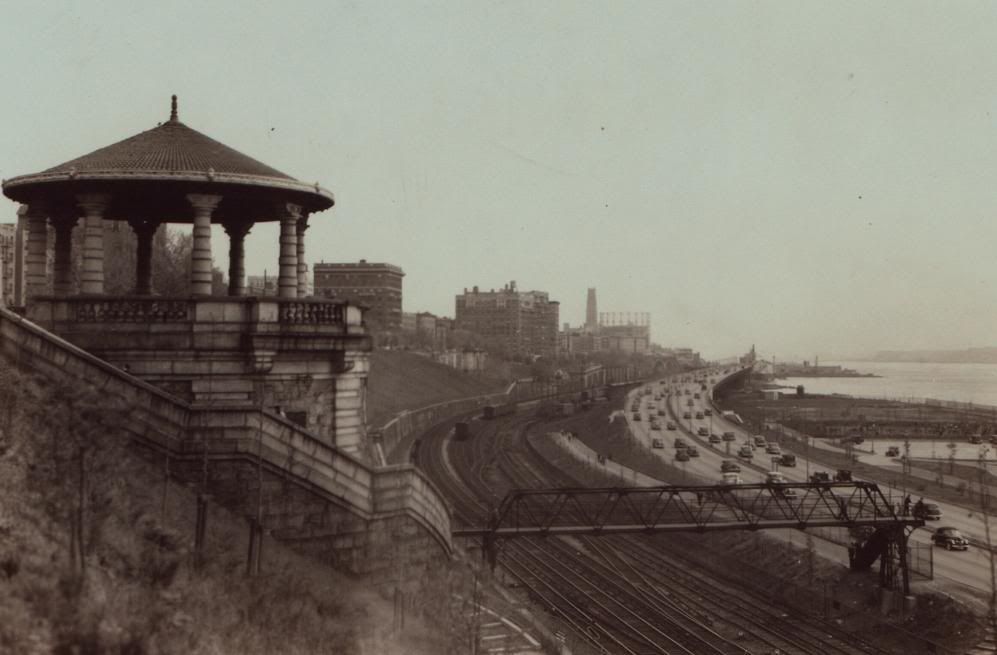
Tracks go under the Henry Hudson Parkway at about 123rd St.
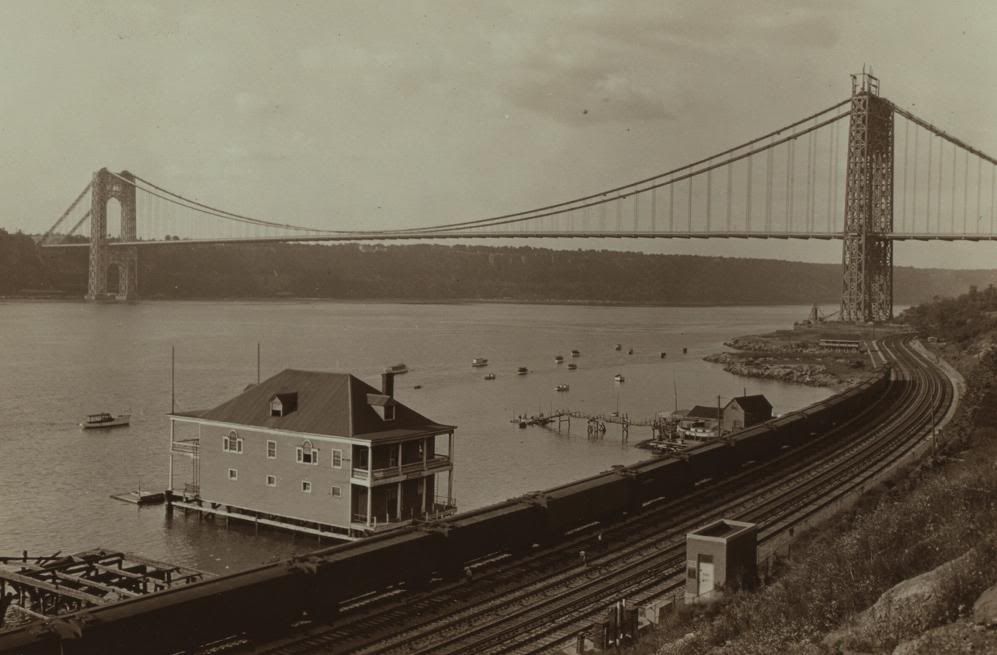
The tracks from 72nd St. to Spuyten Duyvil were electrified when the George was new in 1931.
Pretty sure the electrification at one time went down as far as 60th Street.
That Shaughnessy pic (says 1957) shows third rail on that elevated loop around 30th St Yard-- presumably it went down to St Johns Park, but don’t offhand recall a pic that proves that. (Lots of pics show the elevated line south of 30th St when it opened in 1934, when it didn’t yet have third rail.)
I sure don’t know beans, but at present I think that virtually the entire West Side Line was electrified, including the cut from 60th St. to 35th St., and that until the late 1950s, a freight train could be pulled by an electric locomotive all the way from Harmon to St. Johns Park. In pictures of the cut when it was new in 1937, it was pointed out, some ties are wide, as if for future installation of third rail.
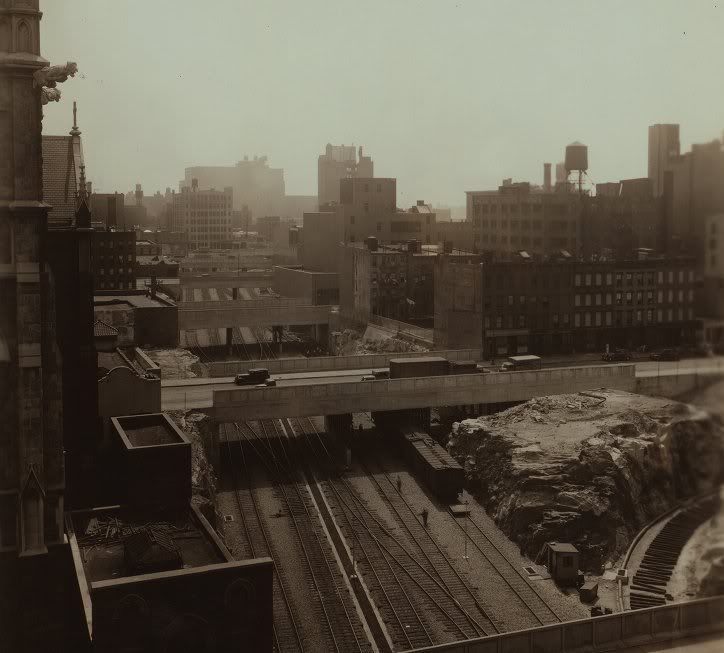
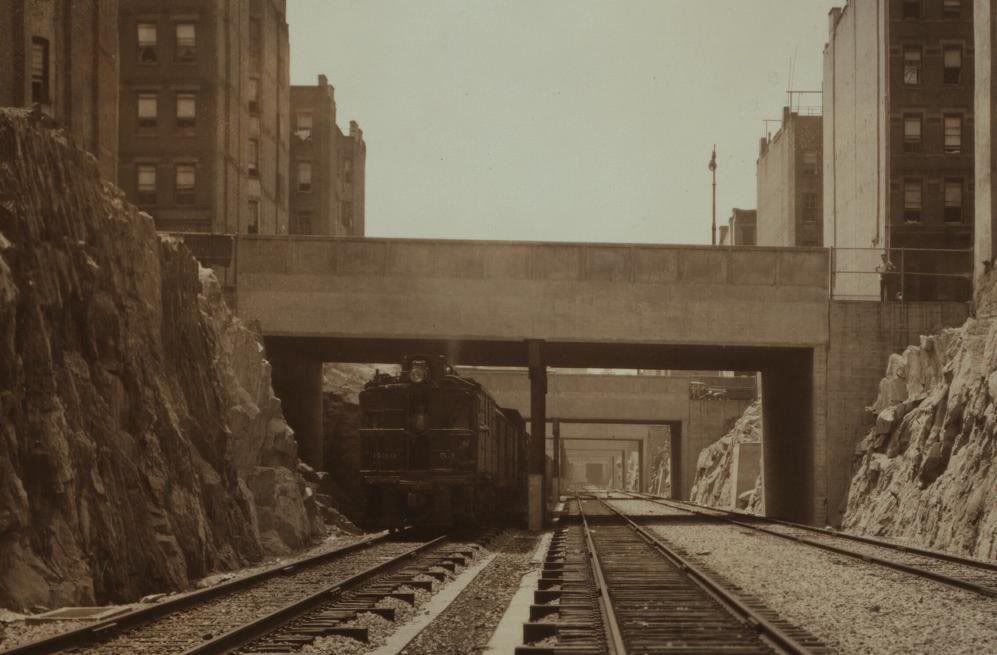
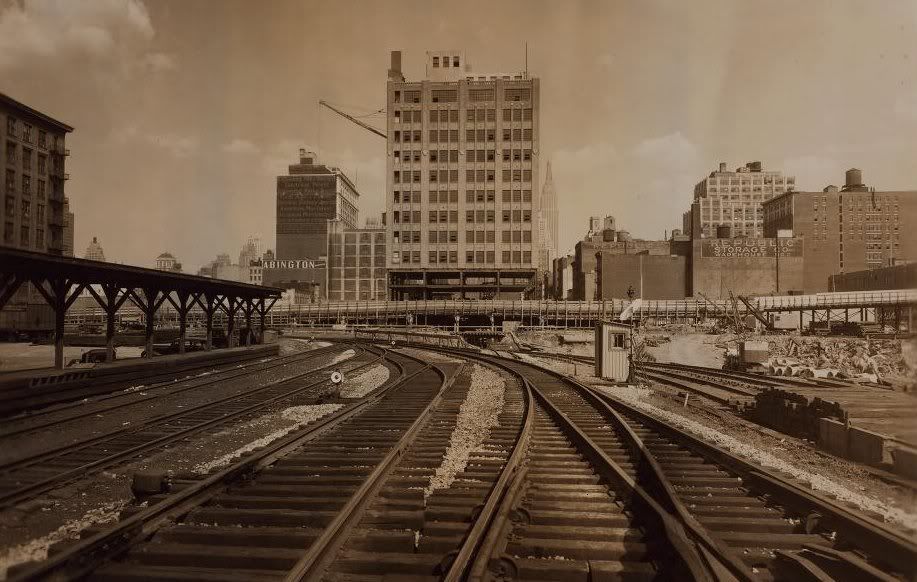
In the lower right corner of this picture is the beginning of what I call “third and fourth rail” in the middle of the track, which seems to be the electric power source on the High Line.
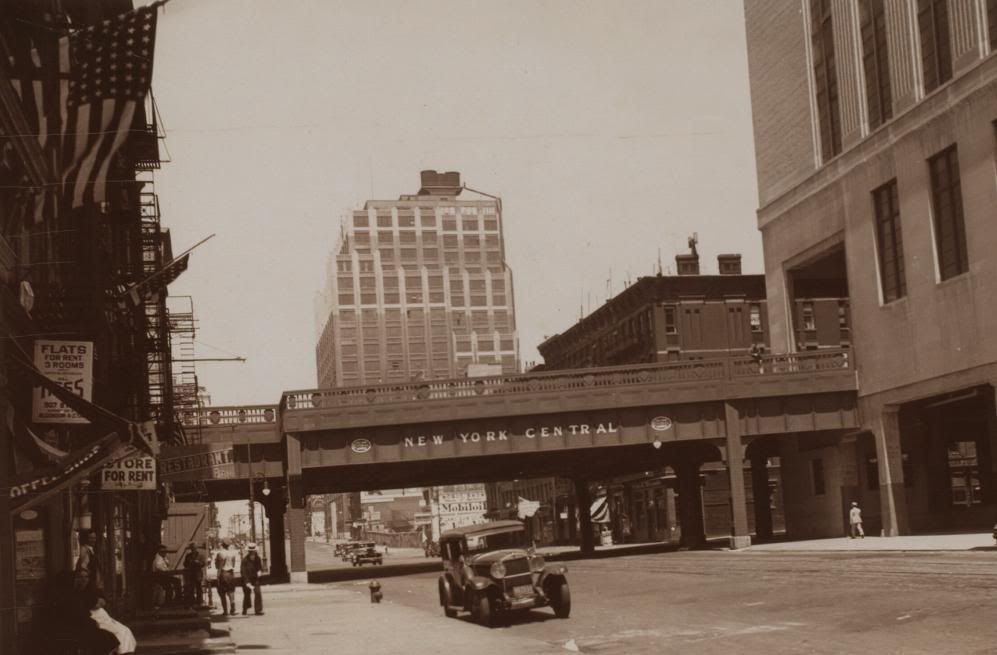
10th Ave. & 30th St. spur into the Morgan Parcel Post building built on the site of the old Hudson River Railroad passenger station. This was the last stretch of track to be de-electrified around 1961.
Interesting pictures at The High Line website…
http://farm4.static.flickr.com/3025/3251565978_7426954105_b.jpg?rand=164362880 Tri
http://farm4.static.flickr.com/3029/3251447516_60a77120cc_b.jpg?rand=864409136 Tri
http://farm4.static.flickr.com/3030/3251565572_663d9a6c0a_b.jpg?rand=676422797 Track
http://farm4.static.flickr.com/3132/3251566214_d764d617b5_b.jpg?rand=113730372 Track
http://farm4.static.flickr.com/3457/3250740015_844a977c76_b.jpg?rand=704256093 SJP
http://railyardsblog.files.wordpress.com/2007/12/historic-image-large.jpg 30th St. Loop
http://farm4.static.flickr.com/3414/3250575471_3cfd1b0f9c_b.jpg?rand=169772561 L
The Central NEVER used between the rails electric power rails. Any rails between the running rails were only guard rails. The central only used underruning outside third rail and overhead rails reached by small pantographs to avoid long gaps in the throat of GCT.
Guard rail to prevent a derailed train from toppling. Of course. Instead I somehow thought a Tri-power locomotive had a contact shoe on the inside. Dumb. It was a versatile engine, though. According to The American Diesel Locomotive by Brian Solomon, “It could operate as a straight third-rail electric, as a battery-electric from onboard storage batteries, or as a battery-electric/diesel-electric, drawing power from both batteries and the onboard diesel engine. The diesel engine would charge the batteries, but the third rail connection could not.”
On a personal note, I need to express gratitude to Henry and regret that this thread veered way off topic at his expense. I should’ve installed guard rail.
Mike
Come on Mike…fun, interesting, and great discussions never stay on topic but wander in and out of the topic in a most entertaining and informative way. Then add your pictures and it’s sheer pleasure!
As an addition to my post, today, in the Hudson River topic I would like to mention that this particular thread is the one which sparked my interest, particularly the freight operations, of the old NYC in Manhattan.
One thing I loved to see in the 'photos were the horses. I always have a great feeling seeing 'photos of horses dutifully awaiting their work which usually meant pulling various type of carts with loads and also boats, as they did in yesteryear on UK canals. I guess it is the same feeling that we all have when we compare steam locos with diesels.
Thanks to Google maps I have been able to plot the Hi Line route, including a guess at the lost parts and yards, also to see what was ‘the new cutting route’ from 35th. to 60th. streets. I have noticed that N-S roads are avenues and E-W are streets. [(-D]
Is, not was. Passenger trains still use that.
Thanks for your comment, I know it is still used today but I did say “what was the new cutting route”. It was new then.[:)]